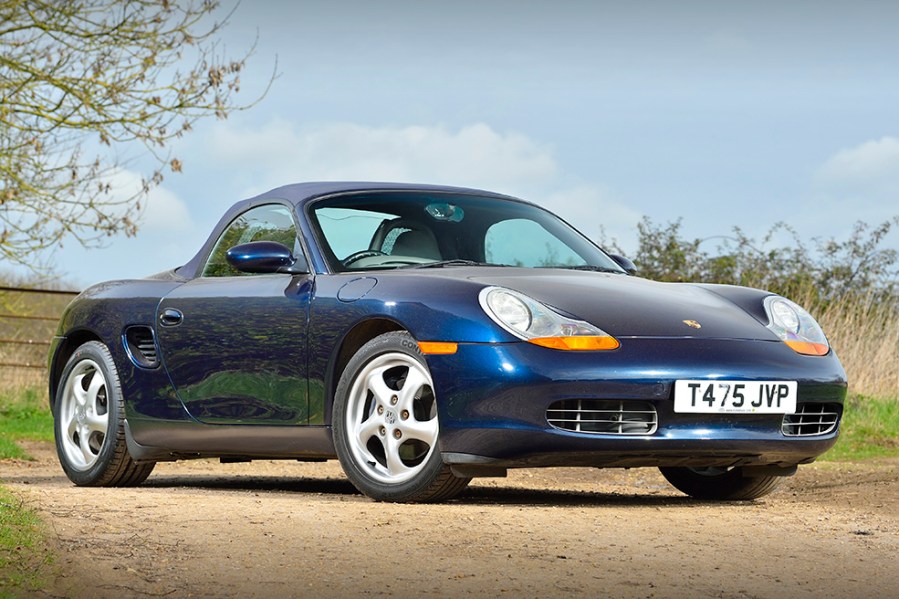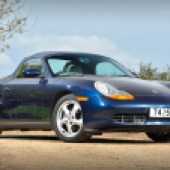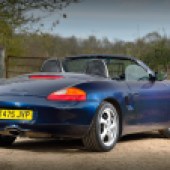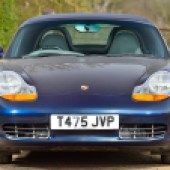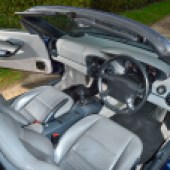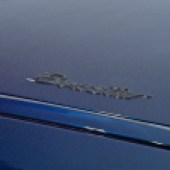The most attainable Porsche is almost as quick as the 911 – and far cheaper. Here’s the lowdown on the first-generation Porsche Boxster
Words: Andrew Everett
In 1992, Porsche was facing a dire financial situation and the economic downturn had significantly impacted the company’s finances. Although the updated 964-model 911 was selling reasonably well, the Porsche 928 was nearing the end of its lifespan, and the revamped Porsche 944 – revised as the 968 – failed to achieve expected sales figures. Despite its qualities, the 968 was merely a facelift of an already ageing design – the Porsche 924, which had been in production for 17 years.
Meanwhile, rival manufacturers were advancing rapidly, particularly BMW with the E36 M3. Porsche desperately needed fresh models that were not merely updates of previous cars, but still retained a connection to its most successful model. The 911 was both an asset and a challenge; it sold at a premium price, but was costly to manufacture. To remain independent, Porsche urgently required an all-new sports car – one that could share components with the next-generation 911 while being more affordable to produce.
Among the styling proposals presented to the Porsche board, the chosen design came from Pinky Lai and Grant Larson, under the guidance of Harm Lagaay, Porsche’s director of vehicle styling and the designer of the original 924. Their concept, inspired by the 911 and the Porsche 550 Spyder, debuted at the 1993 Detroit Auto Show to widespread acclaim. The production Porsche Boxster – a portmanteau of its boxer-engine, roadster layout – arrived in Europe in 1996, reaching the UK in 1997. It was a revelation and is widely credited, even within Porsche, as the car that safeguarded the company’s independence, preventing a potential takeover by Volkswagen.
Mechanically, the Boxster featured fully independent coil spring suspension with MacPherson struts. However, its most discussed feature was the engine. Contrary to expectations of a four-cylinder unit, Porsche introduced an all-new water-cooled 2.5-litre flat-six, producing 204 bhp – the same output as the final 3.0-litre 911SC from 1983 and matching the Ford Sierra Cosworth. Mounted in a mid-engine layout, the powertrain contributed to an almost perfect 50/50 weight distribution.
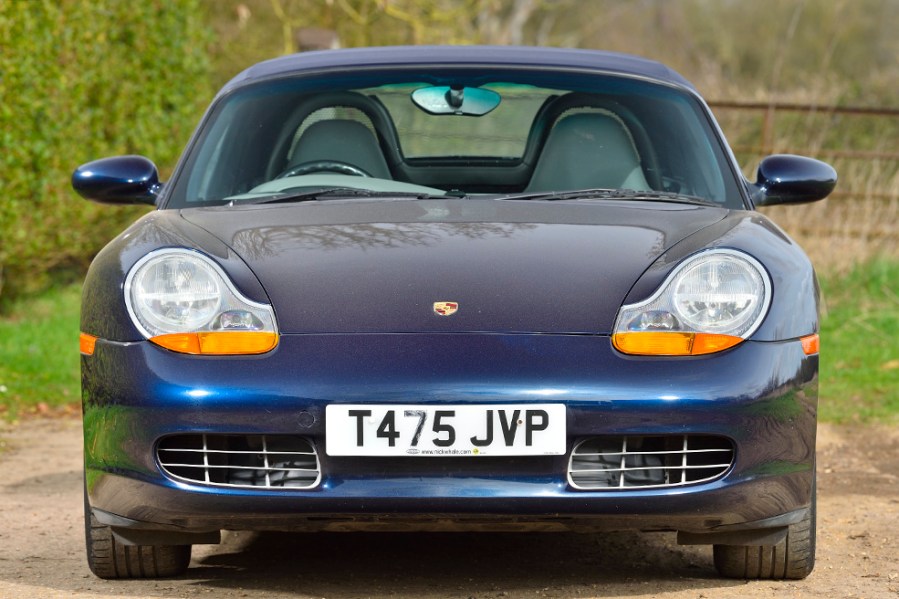
Though 70mm longer than the 993-generation 911, the Boxster was considered by many to be the superior driver’s car, boasting exceptional handling balance and just enough power for an engaging experience. At launch, its base price was £33,950, yet demand was so high that a speculative market quickly emerged.
The Boxster’s aerodynamic body, with a drag coefficient of 0.31, was manufactured using panels stamped by BMW. Technical innovations included alloy four-piston monoblock brake calipers, a retractable rear spoiler activating at 50mph, and an electric soft-top that could be lowered in a record-breaking 12 seconds. Performance figures were impressive: 0-60mph in 6.5 seconds, 0-100mph in 18 seconds, and a claimed 32mpg fuel efficiency for touring. A five-speed Tiptronic semi-automatic transmission was later introduced and proved popular.
In 1999, Porsche replaced the 2.5-litre engine with a more powerful 2.7-litre producing 217 bhp, while the new Boxster S featured a 3.2-litre engine with 250 bhp, along with larger wheels, upgraded brakes, and enhanced suspension. That same year, production moved to a new factory in Finland while maintaining the trademark build quality. The S models received a double-layer soft-top, which was extended to the 2.7-litre cars the following year, along with POSIP side-impact protection.
A minor facelift in 2002 introduced a glass rear screen, clear indicators, a glovebox, a revised steering wheel, updated soft-top mechanics, new wheel designs, and subtly reshaped bumpers. Power outputs increased to 228 bhp for the 2.7 and 260 bhp for the Boxster S. Production of the first-generation 986 ended in 2005, succeeded by the heavily updated 987 model, which later formed the basis for the Cayman.
Bodywork
Boxsters don’t rust, and any example that has should either be very cheap or avoided altogether. Look around the rear arches, check panel gaps, make sure it’s all one colour (silver can be tricky to match) and see that the doors, bonnet and boot all open and close as they should. The plastic headlights can cloud up, but second hand units or a polishing kit can rectify the yellowing – be warned, the optional Bosch Litronic HID units are both rare and expensive, bosting around £850 each.
Power the hood up and down and check the condition of the rear screen on plastic window cars, as well as the hood stitching. The motor and linkages are pretty tough, but we’ve heard of these being ‘converted to a manual hood’ – in other words, the motor failed and rather than fixing it properly, it was fixed cheaply.
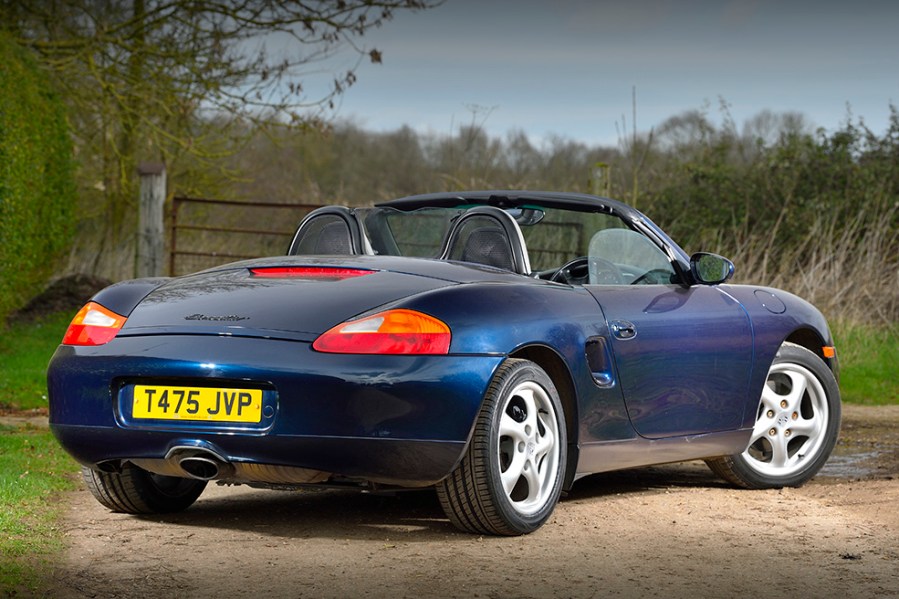
Engine and transmission
If the car looks right and drives as it should, it’s probably going to be okay. But what are the horror stories? No doubt you’ll have heard a few about the water cooled flat-six, and it’s perfectly fair to say that they are not as robust as the old air-cooled units.
The rear crankshaft oil seal is known to leak oil, and this, whilst not catastrophic, is annoying and eventually oil will get onto the clutch. To fix it involves removing the gearbox, and whilst you’re there you may as well replace the clutch as well as addressing a more serious concern: the intermediate shaft bearing (IMS). On air-cooled engines, this was an open bearing lubricated by engine oil and never gave a moment’s trouble. That of course was a green light for it to be ‘improved’, and it was replaced by a sealed bearing with grease inside.
In time, the grease dries up and while some engine oil can seep inside, it’s a poor idea. When this bearing fails, the intermediate shaft that drives the cam chains will float, causing cam timing to jump and potentially write off the engine. With the gearbox and flywheel off, it’s a simple task to replace the bearing with a proper one – problem solved.
Casting the cylinder block in an open wet-liner style had been achieved with success by Porsche with the 944 and 928 engines, so what went wrong here is a mystery. Bores can crack at the top where they meet the head gasket and in extreme cases, a D-shaped chunk of the cylinder can break off. That’s instant engine failure in a cloud of steam and smoke. It happens to any water-cooled flat six of this era, including the 911 but it’s not that common. Early warning signs are few and there is no preventative maintenance – but if it hasn’t happened by now, then it’s probably not going to.
The Boxster’s cooling system needs care. Water pumps can fail and they’re not too tricky to replace, but new ones are pricey. By this age, the radiators (one each side) could be getting tired and it pays to closely inspect the hoses as well – particularly during radiator replacement.
The good news is that Porsche Boxster gearboxes are generally fine. The manual ‘boxes are very tough, and the Tiptronic units surprisingly so. However, more complication means more to go wrong, and you may rightly feel that a manual is the best option. Clutches are cheap to buy, but the labour involved can bring costs up.
Suspension, steering and brakes
There’s no mystery to the suspension – it’s McPherson struts, wishbones and balljoints. Listen for clonks and rattles that suggest a knackered balljoint, and check the car’s MOT history – any mention of ‘misting’ on dampers (shock absorbers) means it needs new ones if it’s not had them. Boxster parts are also cheap. If you stick to companies such as GSF or Euro Car Parts, you’ll find that regular service parts cost far less than from official sources.
A good indicator as to how well the owner looked after it is to check the tyres. Four N-rated Michelins? That’s good. Two Dunlops and two Goodyears? Not bad. Four budgets-brand items? Oh dear. The Porsche Boxster drove exceptionally well when new, and a really good example of a 2.5 on quality tyres will still provide phenomenal roadholding and a standard of handling, steering and ride that border on magical.

Interior, trim and electrics
Virtually all examples of the Boxster have leather seats – very often a grey leather that was popular in 1998, but which is less trendy today. Worn-out driver’s seat bolsters are common, but a repair shouldn’t be overly expensive. The rest of the interior is typical of a 90s German car, with tough carpets, decent plastics and the odd cheap and nasty bits such as the air vents, where Porsche saved a few pennies. If the car has air conditioning, check it works – if not, it could need regassing or a new condenser.
Porsche Boxster: our verdict
Once derided by those who didn’t know better (or hadn’t driven one), the Porsche Boxster has grown into a real modern classic and thoroughly shaken off its ‘poor man’s 911’ image. Its dynamic ability and depth of engineering are key to its appeal, as is its still-attainable price point: it’s hard to have this much fun for less.
As with all cheap Porsches, we don’t expect the Boxster to stay attainable forever. If its older 924 and 944 siblings are anything to go by, you should buy now while values are low and focus on having a great time behind the wheel as the market comes round to the Boxster’s talents.
Boxster values are as low as they’ve ever been, or are likely to get – a tatty 2.5 can be bought from auction for under £2500 in some cases, while higher-mileage 2.5- or 2.7-litre cars with MoT and healthy mechanicals range from £3000–6000 privately. The automatic Tiptronic cars aren’t quite as involving, but make daily use a breeze and generally command around £1000–1500 less than the equivalent manual car.
If only the full-fat 3.2 S will do, however, start your search around £4500–5000, rising to £9000 for the low-mileage facelift cars. Don’t be tempted to pay much more unless the car is in exemplary condition with incredibly low miles, however – at the five-figure barrier, the newer 987 Boxster and Cayman (and even the 996 911) enter your budget.
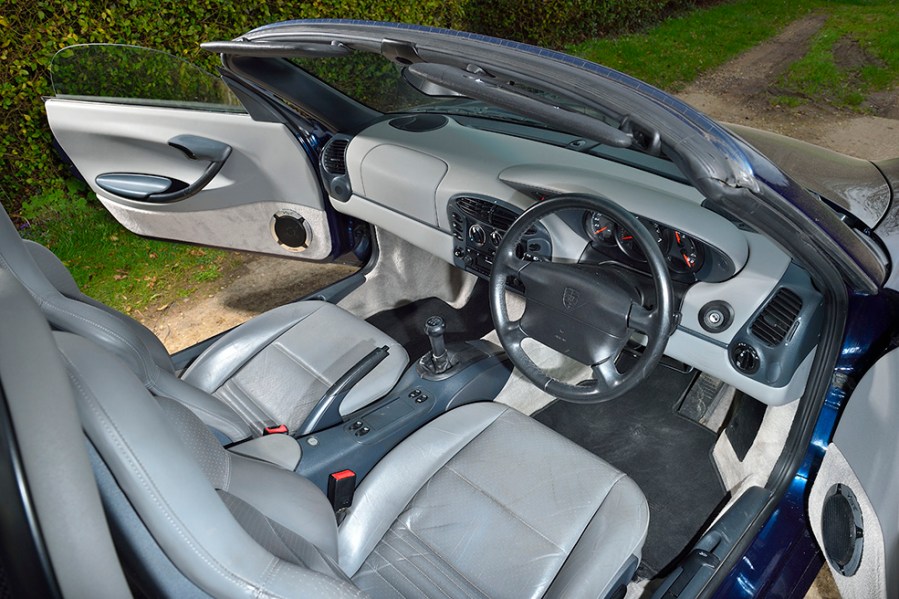
Porsche Boxster timeline
1993
Boxster Spyder Concept unveiled at Detroit Auto Show – inspired by 550 Spyder and well-received.
1996
986 Boxster enters production with 201bhp, 2.5-litre flat-six – five-speed manual and Tiptronic semi-automatic gearboxes offered.
1999
Base 2.5 replaced by 217bhp 2.7-litre engine, Boxster S with 250bhp 3.2-litre unit and six-speed gearbox launched.
2002
‘986.2’ facelift introduced with new headlights, revised bumpers and glass rear window. Base 2.7 now produces 225bhp, 3.2 S now makes 258bhp.
2004
986 Boxster production ends after 165,000 sold, replaced by 987 Boxster and later Cayman coupe.
Porsche Boxster alternatives
TVR Chimaera
The Chimaera was a landmark car for TVR, blending the rapid, Porsche-baiting performance and brutal soundtrack with hitherto unknown liveability and surprisingly decent build quality. Just as memorable as the Boxster, but for different reasons, and its rarity means higher prices.
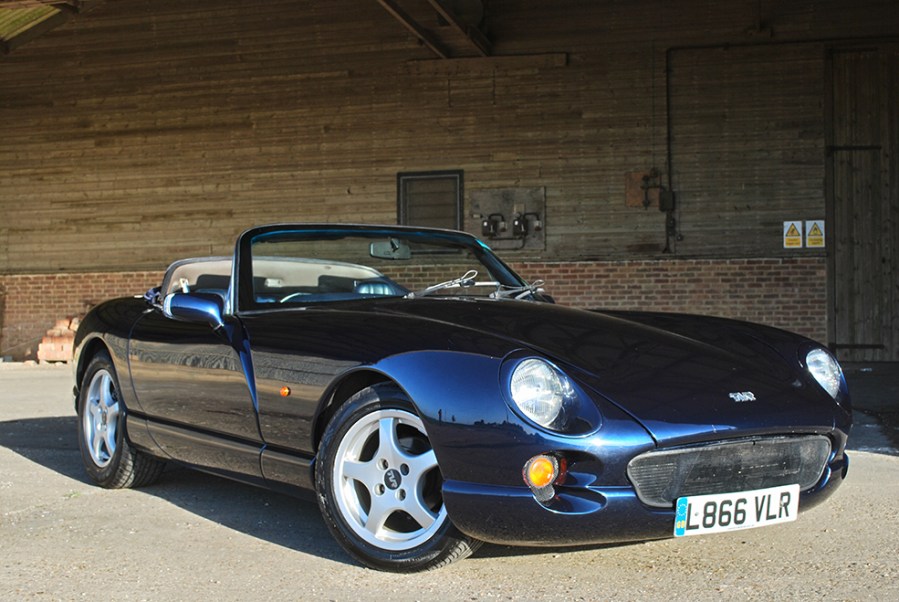
Honda S2000
With its epic 9000rpm VTEC powerplant, rigid X-frame chassis and styling that still looks modern, the Honda S2000 arguably makes the strongest Boxster rival. Not quite as luxurious, however, and some will prefer having a Porsche on the driveway.


